Giant Hogweed
Giant Hogweed
Heracleum mantegazzianum Sommier & Levier
Apiaceae (Carrot Family)
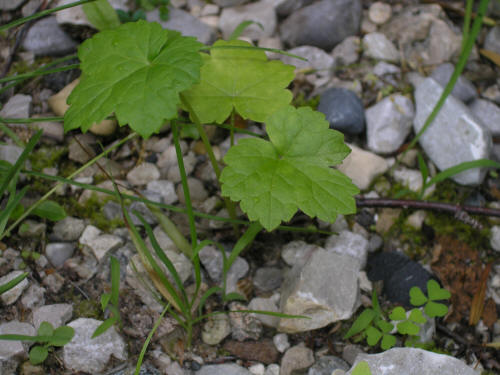
▲ ▼ seedlings, young plants
▲ ▼ seedlings, young plants
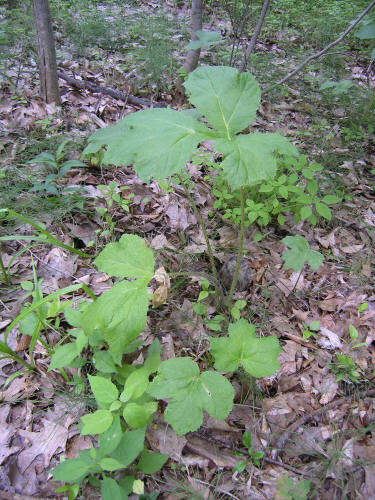
▲ ▼ slightly older plants
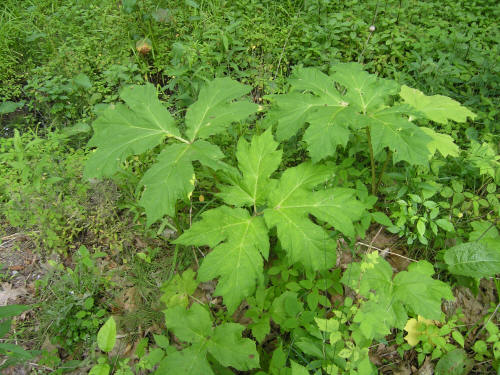
▲ ▼ mature plants, ready to flower
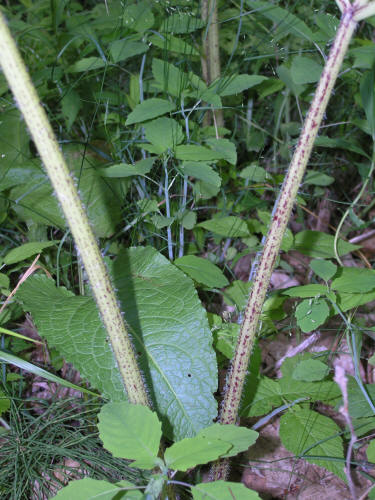
▲ ▼ purplish speckling in ridges and hairy stems
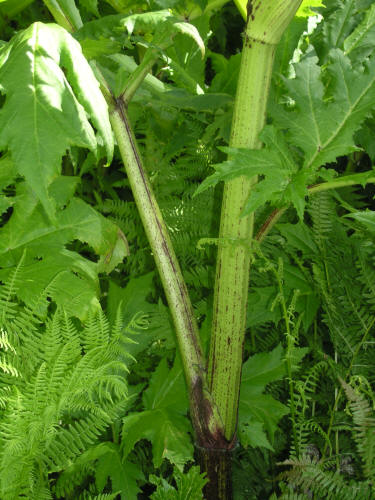
▲ ▼ purplish speckling in ridges and hairy stems
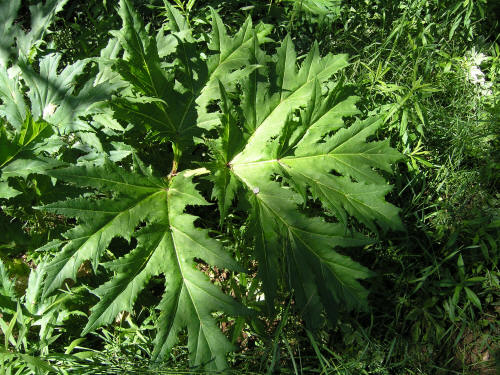
▲ large mature leaf (note U.S. dime just below and right of center picture sitting on leaf)
▲ hollow flowering stem (above photo by Mike Sallee)
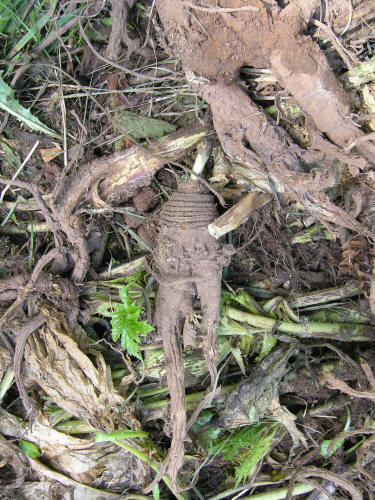
▲ uprooted crowns (still trying to grow)
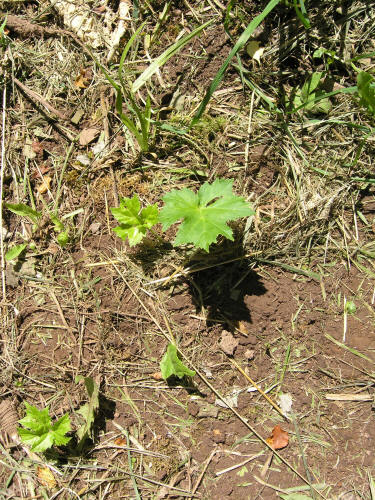
▲ regrowth from where the crowns had been dug
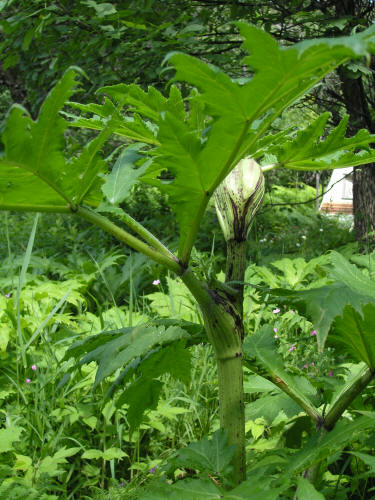
▲ plant initiating flowering
▲ ▼ mature, flowering plants (above and below photos by Mike Salli)
▲ ▼ mature, flowering plants (above and below photos by Mike Salli)
▲ ▼ mature, flowering plants (above and below photos by Mike Salli)
▲ inflorescence starting to form seeds (above photo by Mike Salli)
▲ ▼ seed forming on inflorescence (above and below photos by Mike Salli)
Heracleum mantegazzianum Sommier & Levier.; Giant Hogweed: (Bayer Code: HERMZ; US Code HEMA17)
- Herbaceous short-lived perennial in the Carrot Family (Apiacaeae) that lives 2-5 or more years, producing a rosette of very large, tripartite leaves with toothed margins; leaves are hairy and can be up to 3 feet or more in diameter
- Leaf stems and flowering stems have purple speckling (usually in rows) and moderate to dense fine, straight hairs
- Plants can grow 10-15 feet tall or larger
- Flowers are at stem tips in very large, multi-part umbels of many small white to creamy-white flowers
- Leaf stems are hollow
- Dangerous plant in that sap from plants can cause blistering of skin, once exposed to sunlight after contact with the sap; sap can remain on implements, gloves for a long time--need to wear protective clothing, goggles when in contact with it
- Native to Europe, planted in U.S. as a horticultural curiosity (giant plant), but has escaped and become invasive in cooler, moister parts of U.S.---particularly around Great Lakes areas
- Is declared a Federally noxious weed, so is controlled by government agencies where found
- Appears similar to U.S. native cow parsnip, but cow parsnip lacks the purple speckling, often has more fine white hairs on stems and leaf stems, and usually is about 3-6 feet tall
Much thanks to Jim Finley, Erin Ross, Mike Salli, Susan Trull, Zach Wilson for their help in providing locations to photograph this weed in Wisconsin and Michigan.
(Updated January 15, 2019)